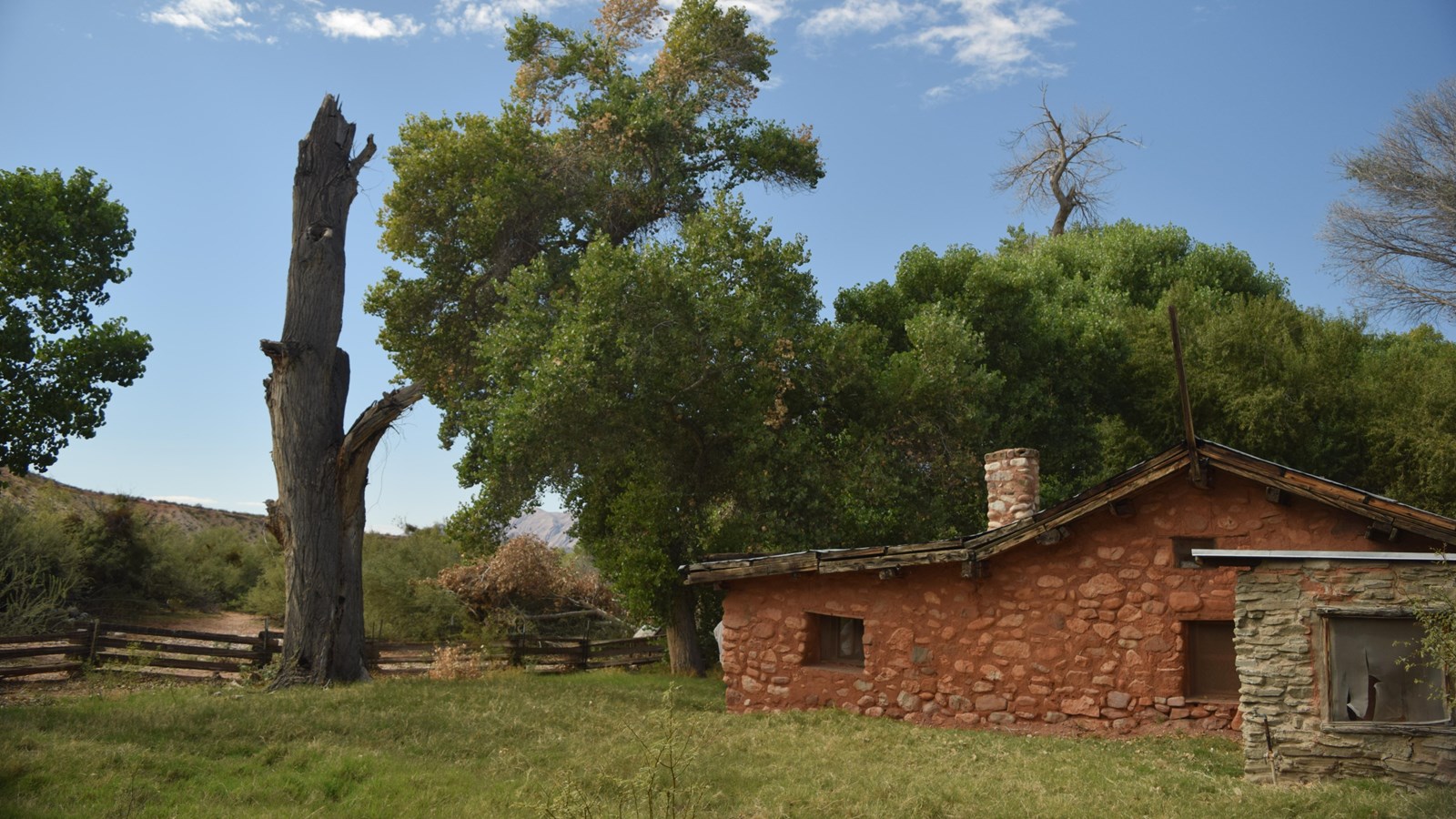Last updated: June 28, 2023
Place
Tassi Ranch

NPS/ C.Henzel
Toilet - Vault/Composting
A Desert Oasis
The sound of a bubbling spring was music to a pioneer’s ears. Running water was a highly valuable resource on the Arizona Strip, and when the early settlers of the strip found it, they held on. Tassi Springs was a popular spot in the pioneer days for just this reason. There are multiple different natural springs on the ranch, which made this area a lifesaving water source, a comfortable place to rest, and an ideal place to make a desert home. Travelers were first documented as taking refuge at Tassi around the 1870’s, although archaeological evidence points to Native American use as early as 5,000 BP.
While technically owned by the federal government, Tassi was used by several different people groups, but was never truly settled until the 1920’s. At one time, over 20 people were documented to be camped out at Tassi. The Hecklethornes, a shepherding family used Tassi as their base camp for a bootlegging operation during prohibition. The Nays, another family occupying the area, were the only settlers who filed for legal ownership of the land, although they abandoned the area before the application was approved. Ed Yates, a rough and tumble cattleman, was one of the first settlers to stake his claim on Tassi Springs, and keep it. Ed Yates began to homestead Seven Springs, a few miles North of Tassi. However, he eventually expanded his property to Tassi Springs. After running off the Hecklethornes and purchasing unofficial water rights from another family, Ed began to develop his ranch. He built reservoirs, a new stone house, a barn and corrals, dug irrigation ditches, and planted cottonwood trees.
After briefly moving away and selling his land to an uncooperative tenant, Ed reclaimed the land and moved back with his daughter and son-in-law. Tassi Ranch thrived with the Yates family back on the land. There were green pastures, and a bountiful garden with tomatoes, corn, watermelon, casabas, chard, and even fig trees. However, Ed retired and sold his land again, this time to the Whitmore family. The Whitmores ran cattle there and made a number of developments in the area, until 2001 when Tassi was officially closed from public grazing. The National Park Service gained full control of the Tassi Ranch area, and began restoring it in order to preserve the precious springs and the ranching history. Today, Tassi Ranch remains a bright spot in the Mojave Desert.
Visiting Tassi Ranch and Spring
This site can be reached after a long drive on rocky and sandy roads (Mohave country roads 111 or 113 and NPS1213) in the Pakoon Basin below the Grand Wash Cliffs. Be advised that the historic area floods frequently both from winter storms and summer monsoons. Because of flooding there is no developed parking area. Walking conditions are rough over rocks outside the fence. Inside the fence the area is unmaintained grass. A short section of old roadbed climbs steeply up to the spring and stream. As you explore the site watch for snakes and the threatened relict leopard frogs that could be underfoot.
A vault toilet was installed on the bluff just south of the ranch in 2022 along the NPS1213 road. Driving to the bluff just past the wash provides a beautiful view of the historic area.
Safety Warning
Please stay out of the historic house. The building has become unstable and could collapse. This historic structure is being preserved but is not safe for entry. Black mold, hantavirus from rodent droppings, and bats are present inside the structure.
⚠️ Tassi Ranch House Flooded - Do Not Enter - Hazardous Conditions
Recent severe flash floods have made the historic ranch house unstable. Black mold and hanta-virus may also be present. Please observe from outside the building but do not enter the structure.
⚠️ 4x4 Vehicles and Off-Pavement Travel Safety
You are responsible for your own safety and you must be able to self-rescue.
